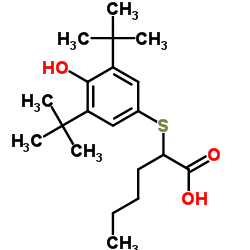Creatinine and N-methylhydantoin degradation in two newly isolated Clostridium species.
M Hermann, H J Knerr, N Mai, A Gross, H Kaltwasser
Index: Arch. Microbiol. 157(5) , 395-401, (1992)
Full Text: HTML
Abstract
With N-methylhydantoin (NMH) as the main organic substrate, two strictly anaerobic spore forming Gram-positive bacterial strains were isolated from sewage sludge. These strains, named Clostridium sp. FS23 and Clostridium sp. FS41, totally degraded NMH, via N-carbamoylsarcosine (CS) and sarcosine as intermediates. Strain FS23 grew also with creatinine, which was converted to NMH by creatinine iminohydrolase (EC 3.5.4.21). This enzyme was formed at high rates with all substrates tested. Cytosine and 5-fluorocytosine were not utilized as substrates by creatinine iminohydrolase preparations purified to a homogeneity of 98%. NMH amidohydrolase (NMHase) and N-carbamoylsarcosine amidohydrolase (CSHase) turned out to be inducible in both strains. Other than in aerobic organisms, NMHase from these two isolated did not require ATP for enzymatic activity. SH-group protecting agents were not necessary for stability.
Related Compounds
| Structure | Name/CAS No. | Molecular Formula | Articles |
|---|---|---|---|
 |
Creatinine Deiminase
CAS:37289-15-9 |
C20H32O3S |
|
Amperometric flow-injection analysis of creatinine based on ...
1994-01-01 [Biosens. Bioelectron. 9(6) , 429-37, (1994)] |
|
Purification and properties of creatinine iminohydrolase fro...
1985-04-10 [J. Biol. Chem. 260(7) , 3915-22, (1985)] |
|
Enzyme kinetic assays with surface plasmon resonance (BIAcor...
2000-10-01 [Biosens. Bioelectron. 15(7-8) , 377-82, (2000)] |
|
Biomolecular modules for creatinine determination.
1996-10-12 [Ann. N. Y. Acad. Sci. 799 , 541-4, (1996)] |
|
Creatinine deiminase (EC 3.5.4.21) from bacterium BN11: puri...
1991-12-31 [Clin. Chim. Acta 204(1-3) , 223-38, (1991)] |